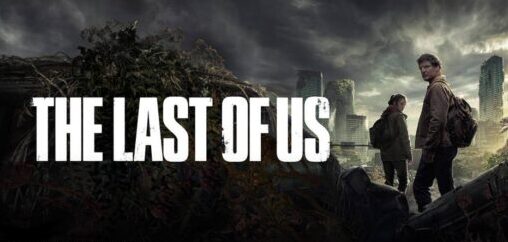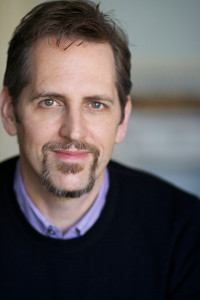Writers often come to me with projects that they think could be a movie or series (i.e. what used to be called television!). And they’re not sure which approach makes most sense.
They may have written it as a feature but suspect (or are told) that it “could be a series.” That there’s “enough there” to expand on, and maybe a single feature doesn’t do it justice.
Or they might be aware that there is a lot more work (and money) in “TV,” with more outlets or channels for episodic content, and arguably the best creative work is happening there.
So it makes sense to target that space, right?
Maybe.
Let’s discuss what goes into deciding if a story/project works best as a movie or series…
As I’ve written about before, from a business standpoint, TV is harder to break into with an original project — if you’re not already established in that world from having written on staff of other people’s shows.
And the fact that there are so many places to sell shows doesn’t mean it’s easier for writers to do so — one still tends to need an agent and/or a manager.
But let’s put business realities aside and just look at the creative aspects.
What kind of stories/projects make more sense as features or as series?
These are the thee prime considerations as I see it:
1. ONE BIG PROBLEM vs. MANY SMALLER ONES
Features are about one big problem that gets resolved.
Series are about one big unsolvable problematic situation in which there can be many smaller problems along the way that resolve somewhat.
This is an enormous difference.
If you have what started as a single story with one main problem/goal, you might think you could just turn it into a series by making it take longer for that to be resolved. Instead of two hours, make it take 8, or 10, or 20, or 50.
While there is some truth to this — especially with limited series where, in the end, characters might reach a happy destination they’ve spent the whole series striving for — thinking this way obscures the way series really work. Even the most serialized bingeable streaming series with cliffhangers at the end of every episode still needs episodes that can stand somewhat alone.
How does a writer create that?
By coming up with smaller stories that have a complete narrative arc within a half hour or hour, while still being part of a larger season-long or series-long “story.”
This becomes the bulk of your story-telling, then, and your pitch for a series: not the eventual goal at season or series end that somehow takes a really long time to get to, but what’s happening along the way and how that can create sub-stories that become satisfying episodes.
While a bigger overall goal could be part of your overview or logline, it’s not really what we’re concerned with so much as the potential for individual episodes and stories, and many of them.
These are more about the latest smaller crises or challenges that, while part of the larger goal in theory, demand so much focus that they create their own narratives that play out in one episode.
If your problem can’t easily break down into such satisfying smaller pieces, where it feels like an almost endless number of self-contained challenges can be the focus rather than the one big one, you may not yet have a strong series idea.
2. SINGLE MAIN CHARACTER vs. ENSEMBLE OF MAIN CHARACTERS
A story where a particular character has a particular objective – even if it can be expanded into endless episodes – tends to feel more like a feature than a series.
Series are almost always about a variety of interconnected characters, at least several of which have their own stories — within episodes and/or in the series as a whole.
That means the point-of-view in an episode moves back and forth between multiple people, each of whom have their own narrative with a beginning, middle and end that we invest in.
And it means your pitch for the series as a whole is about that group, who are in a web of conflict with each other.
Usually several individuals are important enough to be central to the pitch, even if one is “more equal than the others.” That one might be the leader of something or get the most screen time, but if we’re only ever focused on them and their particular goal(s), the series will tend to run out of steam and feel like it should be shorter. (As in a feature.)
3. A PERSON’S OBJECTIVE vs. A PLACE’S ONGOING CONFLICTS
It can help to think of viable series ideas as being about a PLACE, more than one character with one main want. Within that place are a variety of characters and problematic situations that are ongoing, that can never be fully resolved, or the series would end.
So whether that place is the West Wing, or Downton Abbey, or a zombie-apocalypse hellscape (or the Veep’s office), the stories are about the people in that place, whose lives continue to be problematic, as opposed to there being one person with one story leading to one ending. (Even though the series might someday get us to such an ending.)
In terms of character change, there’s also a difference. People in a series might evolve somewhat, but they also usually don’t “arc” internally the way a movie character might. There’s less of the “transformation machine” that Save the Cat talks about, because if the characters really change in ways that resolve their internal situation, the series would end.
And a series is like a set of spinning plates that need to keep spinning, almost endlessly.
So… movie or series?
If you’ve got a main character with a big problem to solve and an arc, and that’s mainly what you have… it sounds like a feature.
If you’ve got a place with ongoing problems and conflicts for a variety of people whose situations can have (nearly) endless variations on similar challenges… it sounds like a series.
![]()



Well, when I do my synopsis to the group on the 11th – I’ll reveal if I’m going with the series, or the feature! Great article, Erik. It definitely helped clear things up for me.
This is awesome, Erik.
Very very helpful! 😃
Erik,
This is so clarifying. Series – a place and/or group; feature – one person with a problem to solve.